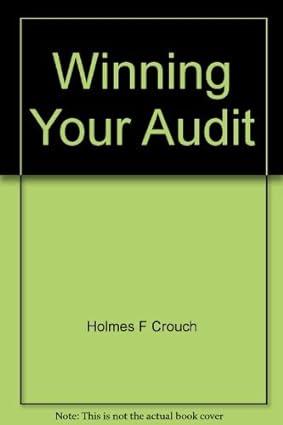Question
Elizabeth Symes, is a lawyer and a mother. During the relevant period, she practised law fulltime as a partner in a Toronto law firm. During
Elizabeth Symes, is a lawyer and a mother. During the relevant period, she practised law fulltime as a partner in a Toronto law firm. During that same period, she was initially the mother of one child (in taxation years 1982, 1983 and 1984), and was later the mother of two children (in taxation year 1985). The appellant is married.
The appellant employed a nanny, Mrs. Simpson (Simpson), during these taxation years. Simpson's only employment function was to care for the appellant's children in the appellant's home. During 1982, 1983 and 1984 respectively, the appellant paid Simpson $10,075, $11,200 and $13,173 to care for her one child. During 1985, the appellant paid Simpson $13,359 to care for her two children. The appellant deducted from Simpson's wages and remitted to Revenue Canada income tax payments, Canada Pension Plan contributions, and Unemployment Insurance premiums as required. The appellant also remitted the pension and unemployment insurance contributions required of employers. Simpson received a T4 slip from the appellant with respect to each of the taxation years.
In her personal income tax returns for 1982 to 1985, the appellant deducted the wages paid to Simpson as business expenses. In Notices of Assessment received by the appellant in 1983 and 1984, Revenue Canada allowed the deductions. However, in Notices of Reassessment dated December 9, 1985 and November 7, 1986, Revenue Canada disallowed the deductions for all four years. The appellant objected, but the disallowance was confirmed for the stated reason that the expenses were not outlays or expenses incurred for the purpose of gaining or producing income from business. The expenses were characterized as personal or living expenses. In place of the disallowed deductions, Revenue Canada allowed the appellant revised childcare deductions of $1,000 for 1982, $2,000 for each of 1983 and 1984, and $4,000 for 1985, pursuant to s. 63 of the Act.
After the appellant's objection to, and Revenue Canada's confirmation of, the Notices of Reassessment, the appellant successfully challenged these notices in the Federal Court, Trial Division. The Trial Division held that the appellant could deduct the payments to Simpson as business expenses. The Minister of National Revenue appealed and, in allowing the appeal, the Federal Court of Appeal restored the Notices of Reassessment. Also, The Supreme Court of Canada dismissed the appeal, on split decision (7 to 2).
Required: (Detailed explanation is needed)
- Do you agree/disagree with The Supreme Court of Canadas decision that Elizabeth Symes cannot deduct her nannys expenses as business expenses and why?
Step by Step Solution
There are 3 Steps involved in it
Step: 1

Get Instant Access to Expert-Tailored Solutions
See step-by-step solutions with expert insights and AI powered tools for academic success
Step: 2

Step: 3

Ace Your Homework with AI
Get the answers you need in no time with our AI-driven, step-by-step assistance
Get Started


